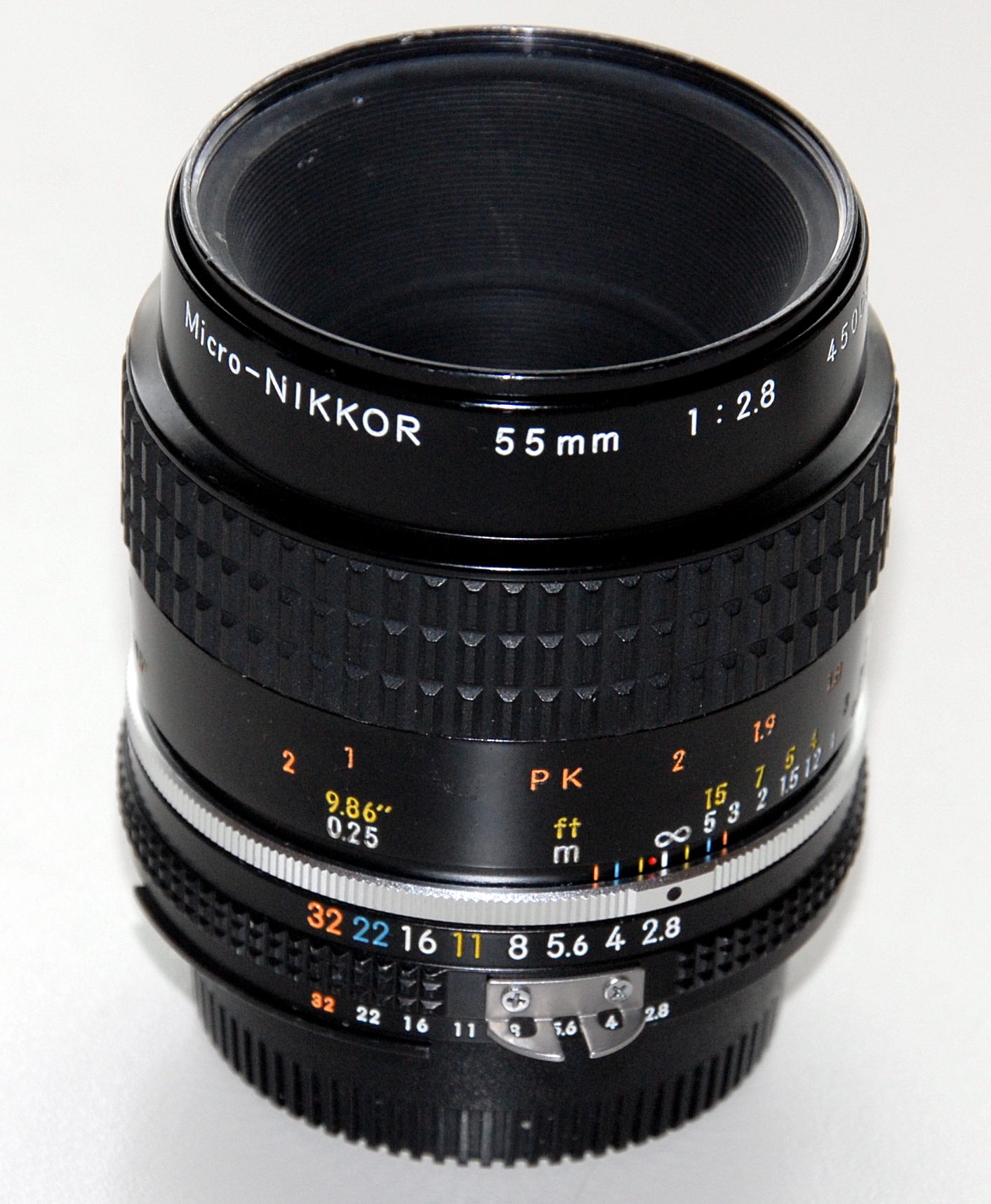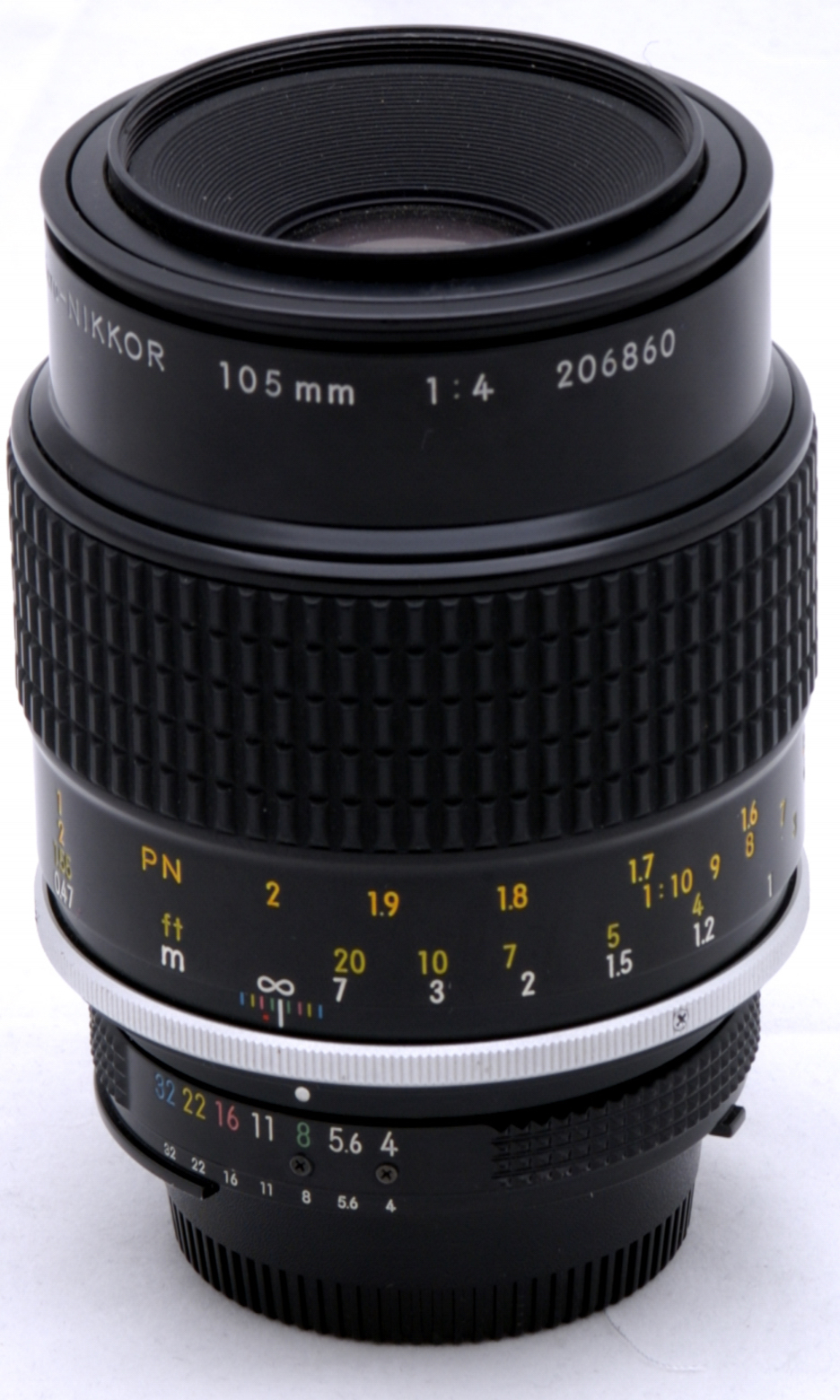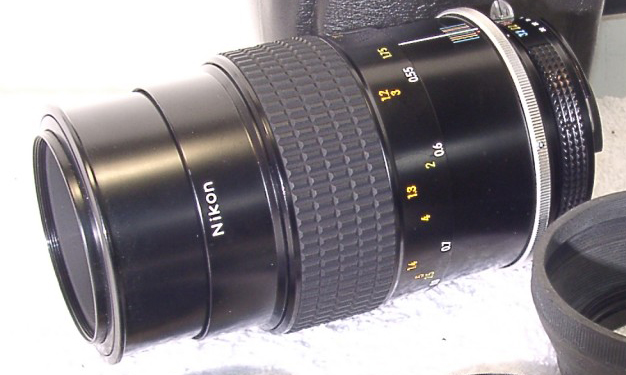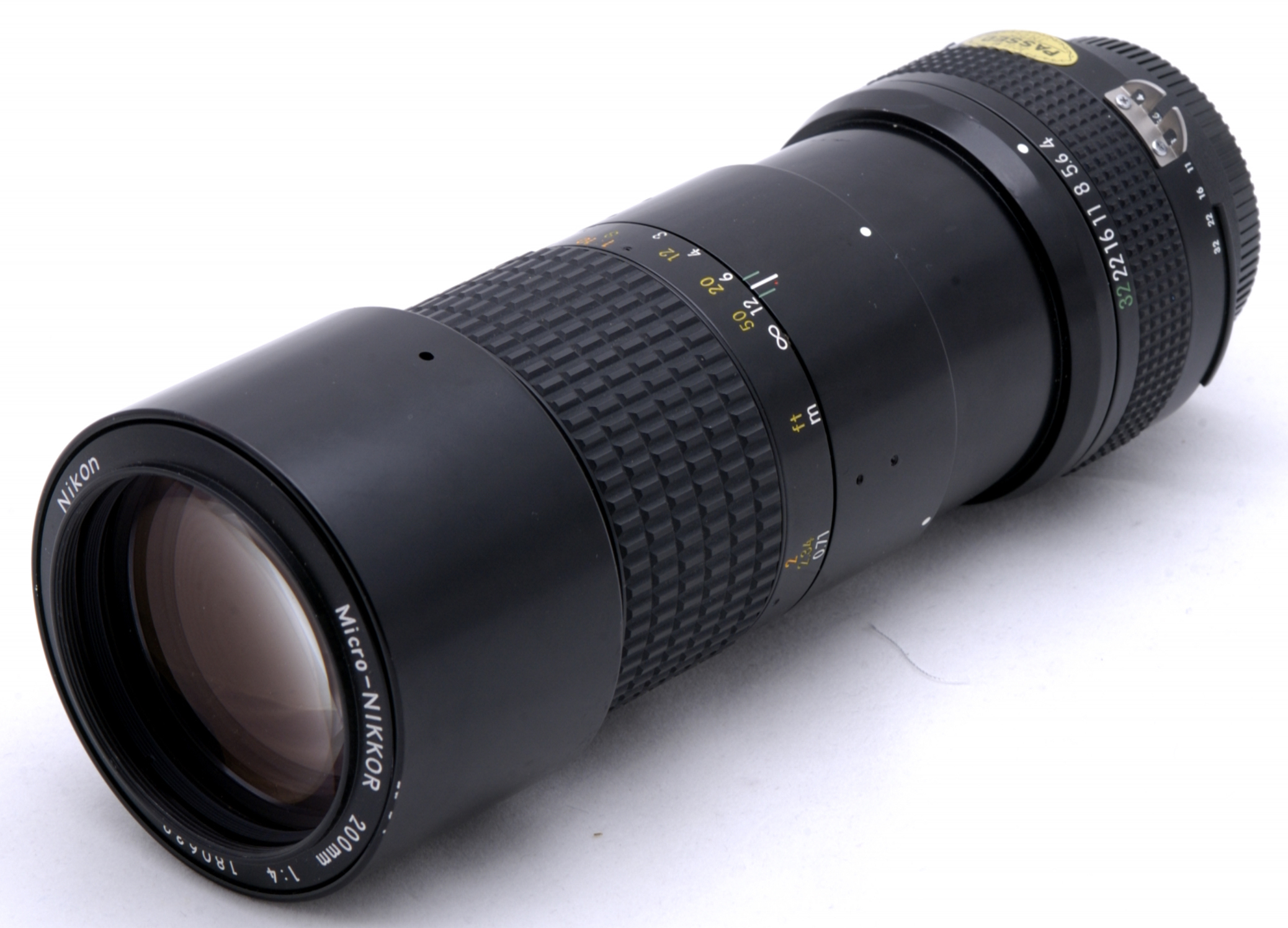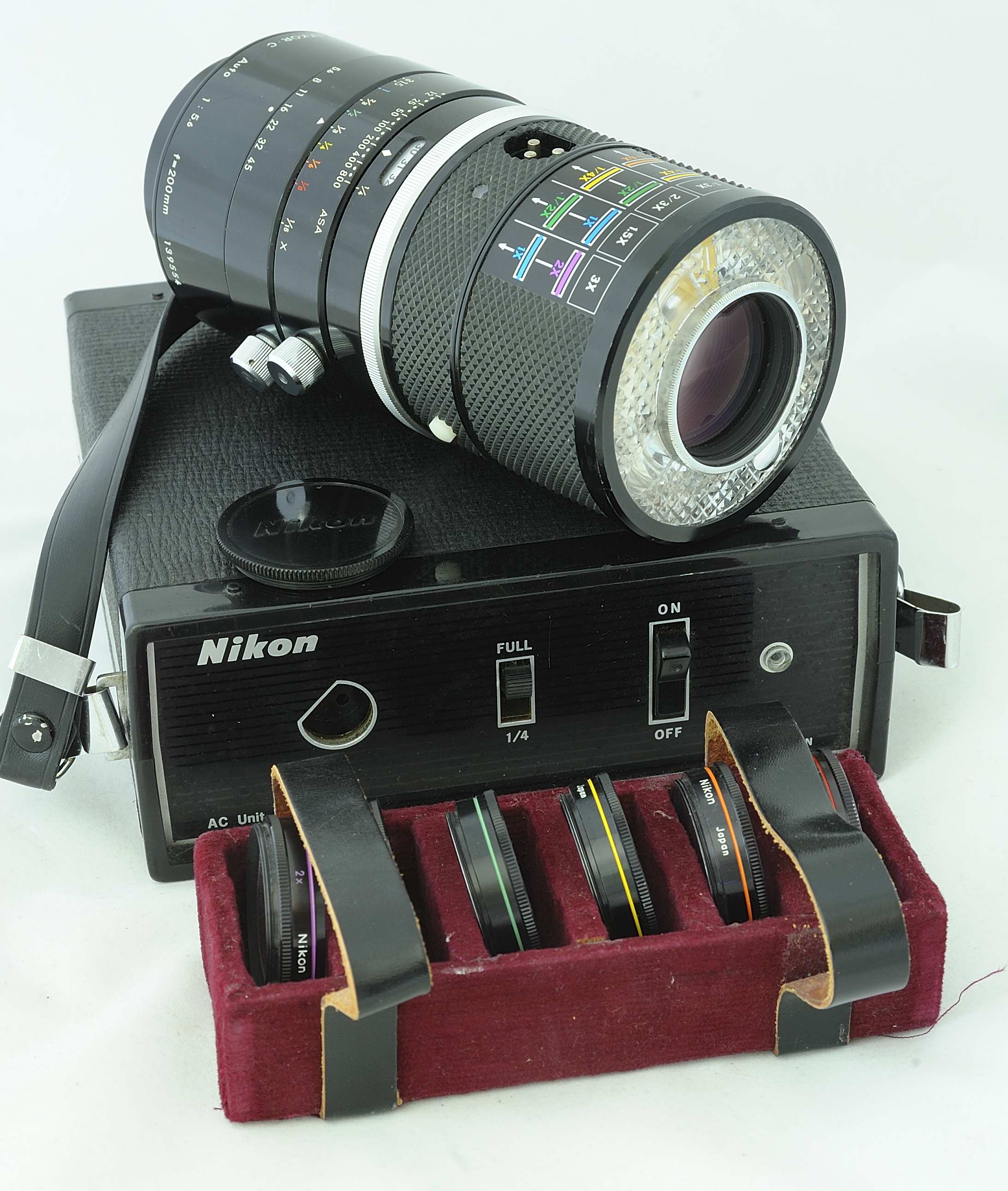Nikon macro lensesNikon introduced close-up equipment almost simultaneously with the first cameras. Close-up lenses and extension tubes were offered rather early. Since the introduction of the first single lens reflex camera in 1959 Nikon had some designs of macro- or micro-lenses on its drawing tables. In the early 1960's the first Micro-Nikkor was introduced. Since then many special optics were offered. Listed below are only manual focus macro-lenses; modern auto focus macro-lenses can be found in the relevant chapters. Listing in focal length order. All lenses are outstanding performers, even when wide open. The lens choice depends on the working distance between the lens and the subject. Note 1: on the secondhand market many Micro-Nikkors are offered with severe problems like oily diaphragm blades. Be careful ! Note 2: Below some adapters - like PK-3 and PN-11 - are mentioned. Be careful in using these adapters on modern AF-cameras (film and digital), as the contacts in the camera mounth may cause short-circuit.
2.8/55 mm.
This very nice and versatile macro-lens was introduced in late 1979. It can be focused down to 25 cm. without any attachment. Reproduction ratio is 1:2. If the PK-13 extension tube is attached ratio 1:1 is possible. And mounted on a bellows a greater magnification (1:3.5) can be achieved. This lens started as an AI-version: in 1980 an AI/S-version was introduced. Its optical construction consists of 6 elements in 5 groups. The lens takes 52 mm. filters and hood HN-3. Its light weight (290 gram) makes handheld photography very easy. Its popularity is documented by nearly half a million produced lenses.
3.5/55 mm. Left: last AI/S-version; right: an AI-converted early lens This lens - presented in 1961 - is the first Micro-Nikkor for the Nikon F-series. It has a preset aperture ring, which is not coupled to a built-in exposure meter of a camera. The closest focusing distance is 21 cm. equaling a reproduction ratio of 1:1. The very first version is rare. The later versions, introduced in 1966, featuring aperture coupling and a repro-ratio of 1:2; with an M-ring 1:1 is possible. The best version is the last version that was presented in 1977. It came with the PK-3 extension tube for repro-ratio 1:1. These Micro-Nikkors are often offered on the secondhand market at low prices.
2.8/105 mm.
In 1984 this Micro-Nikkor was introduced. It was the successor of the 4/105 mm. reviewed below. It can be focused down to 41 cm. at a repro-ratio of 1:2; with the PN-11 extension tube 1:1. The optical construction consists of 10 elements in 9 groups; the lens takes 52 mm filters and the HS-14 hood. With its 515 gram it may give a stabile support for handheld photography.
4/105 mm.
The introduction of this long Micro-Nikkor was in late 1975. Its optical design is a mere 5 elements in 3 groups, making flare and ghosting caused by internal reflection nearly impossible. The lens focuses down to 47 cm. without any attachment; with the PN-1 (on the later AI-version PN-11) a repro-ratio of 1:1 is possible. In 1977 an AI-version is introduced, followed by the AI/S-version in 1981. Although a hood is built-in an extra hood is advisable. The lens takes 52 mm. filters and weighs in at 500 gram.
4/120 mm. - Medical
This Medical-Nikkor is specially made for dentists and other medical professionals. It was introduced in 1981. The standard ring flash makes it an interesting lens for close-up photography of (parts of) the human body, too. Of course it can be used for other close-up photography as well. The optical construction consists of 9 elements in 6 groups. The closest focusing distance - via internal focusing - is 26 cm. if the close-up attachment lens is used. Without this attachment repro-ratio from 1:11 up to 1:1 can be achieved. Together with the close-up lens the ratio can be extended to 2:1. The lens - weighing in at 890 gram - came in a little leather case together with a AC-adapter LA-2 or DC-adapter LD-2.
4/200 mm.
In 1978 this very nice Micro-Nikkor, featuring internal focusing, was introduced. It has 9 elements in 6 groups, takes 52 mm filters and has a built-in hood. Closest focusing is down to 71 cm, equaling a repro-ratio of 0.5:1.
In 1982 an AI/S-version was presented. This version weighs in at 800 gram. It was succeeded by an AF-version. The long focal length makes it possible to keep some distance to the subject.
5.6/200 mm. - Medical
Introduced in 1962 this was one of the very first special close-up equipments for 35mm. photography. This lens can focus to 3.3 meter at its maximum with a repro-ratio of 1:15. With a close-up lens ratio 3:1 can be achieved. It has 4 focusing bulbs to illuminate the subject during focusing as well as a built-in ring-flash (xenon-lamp). With a choice of 6 different close-up attachment lenses, any magnification (1/15x - 3x) can be made. The lens is powered by the LA-1 AC unit, LA-2 or LD-2 adapter.
|
